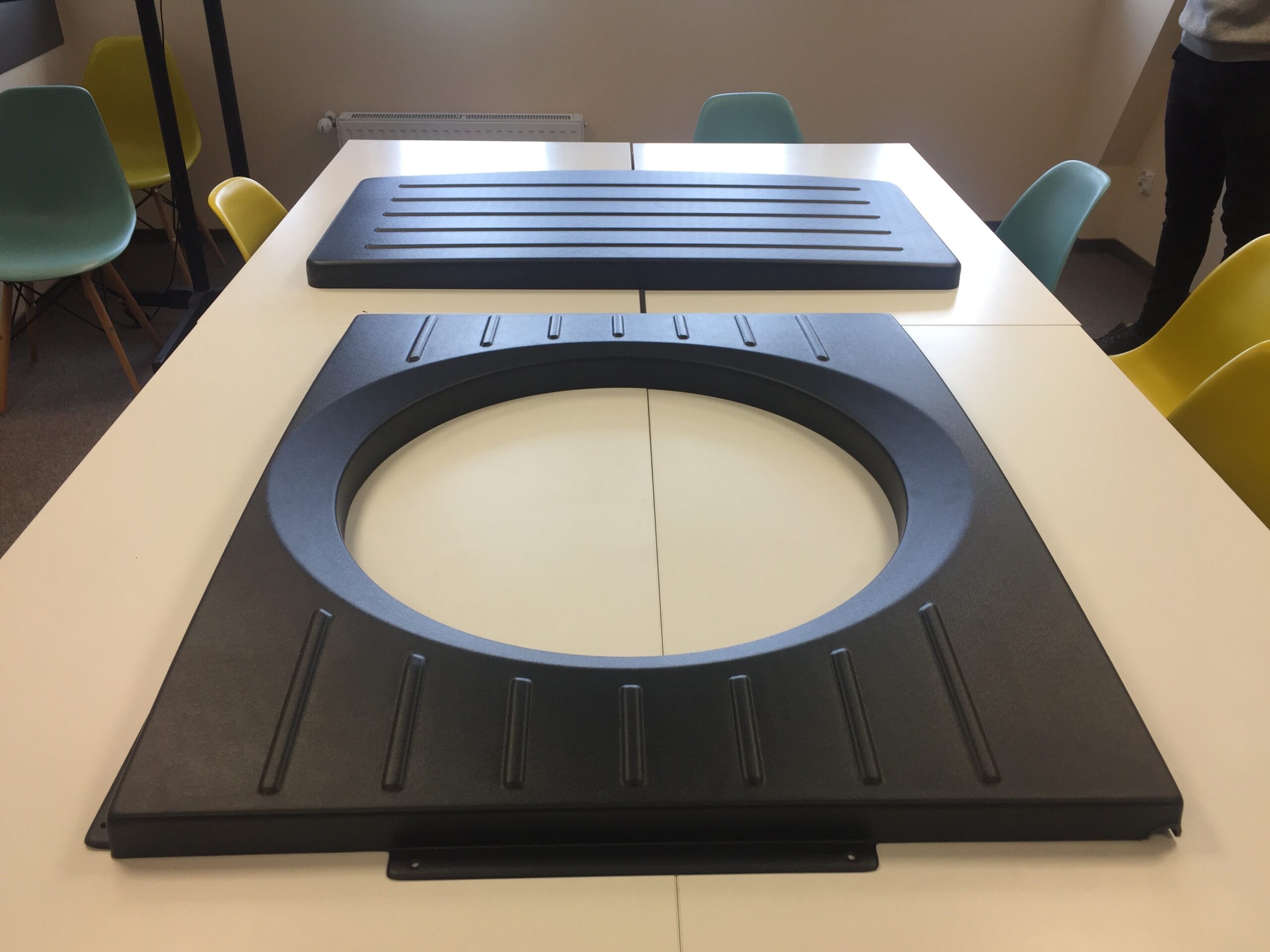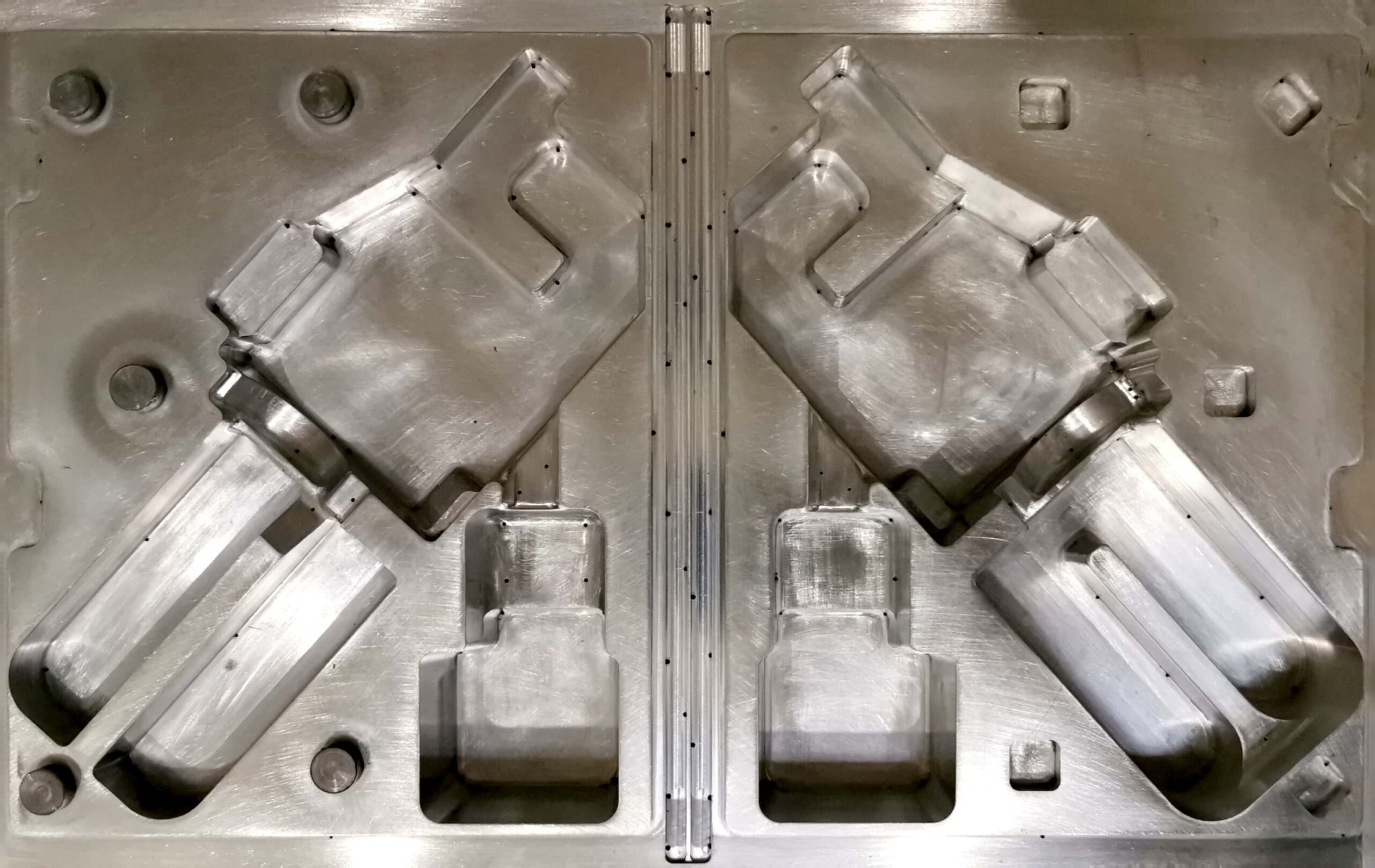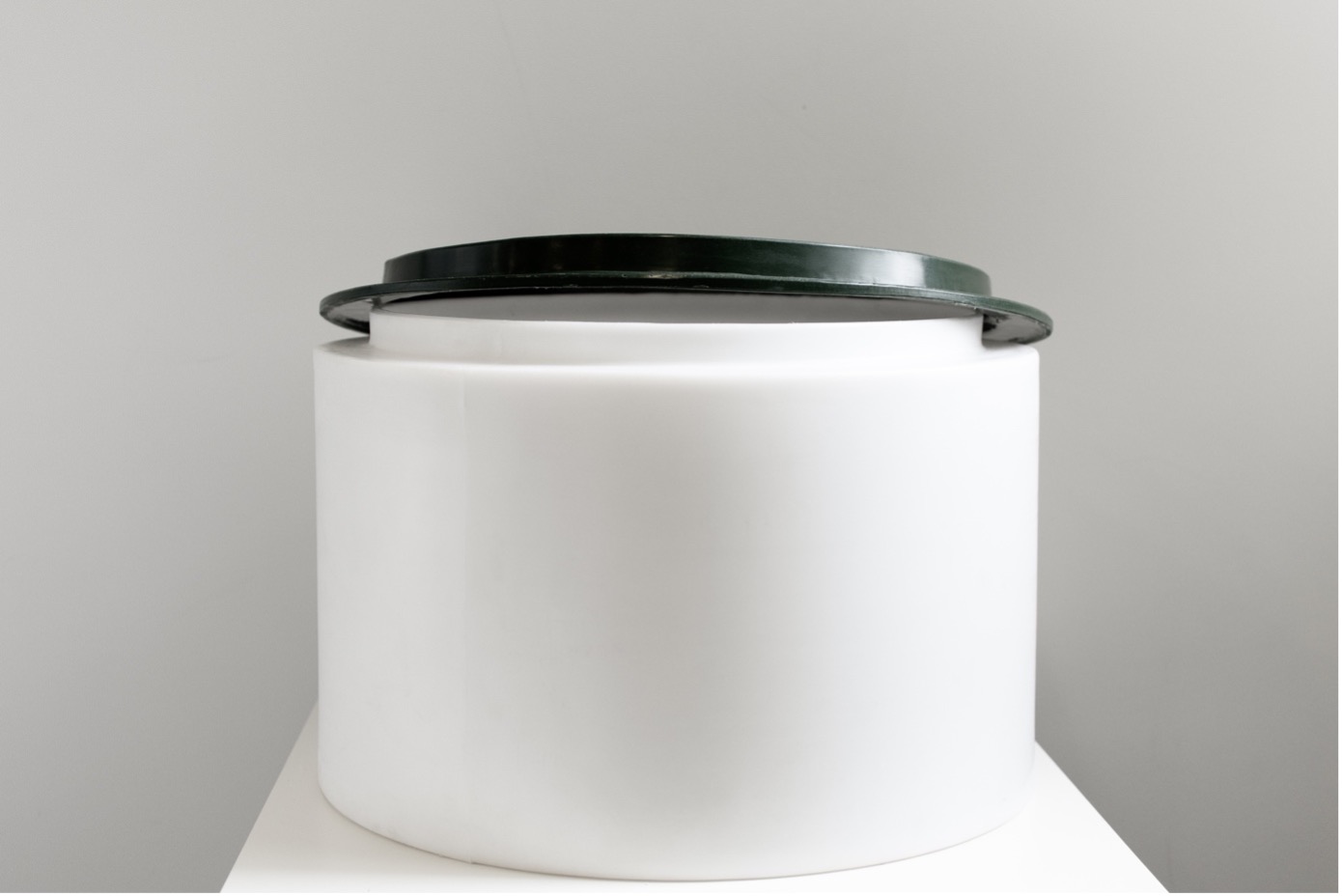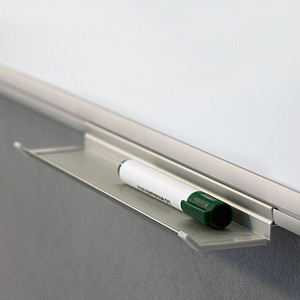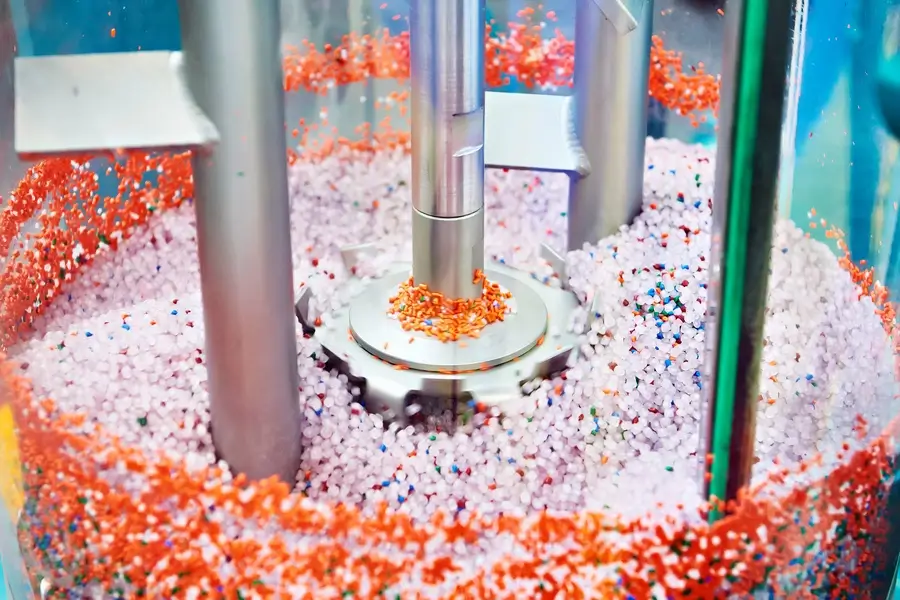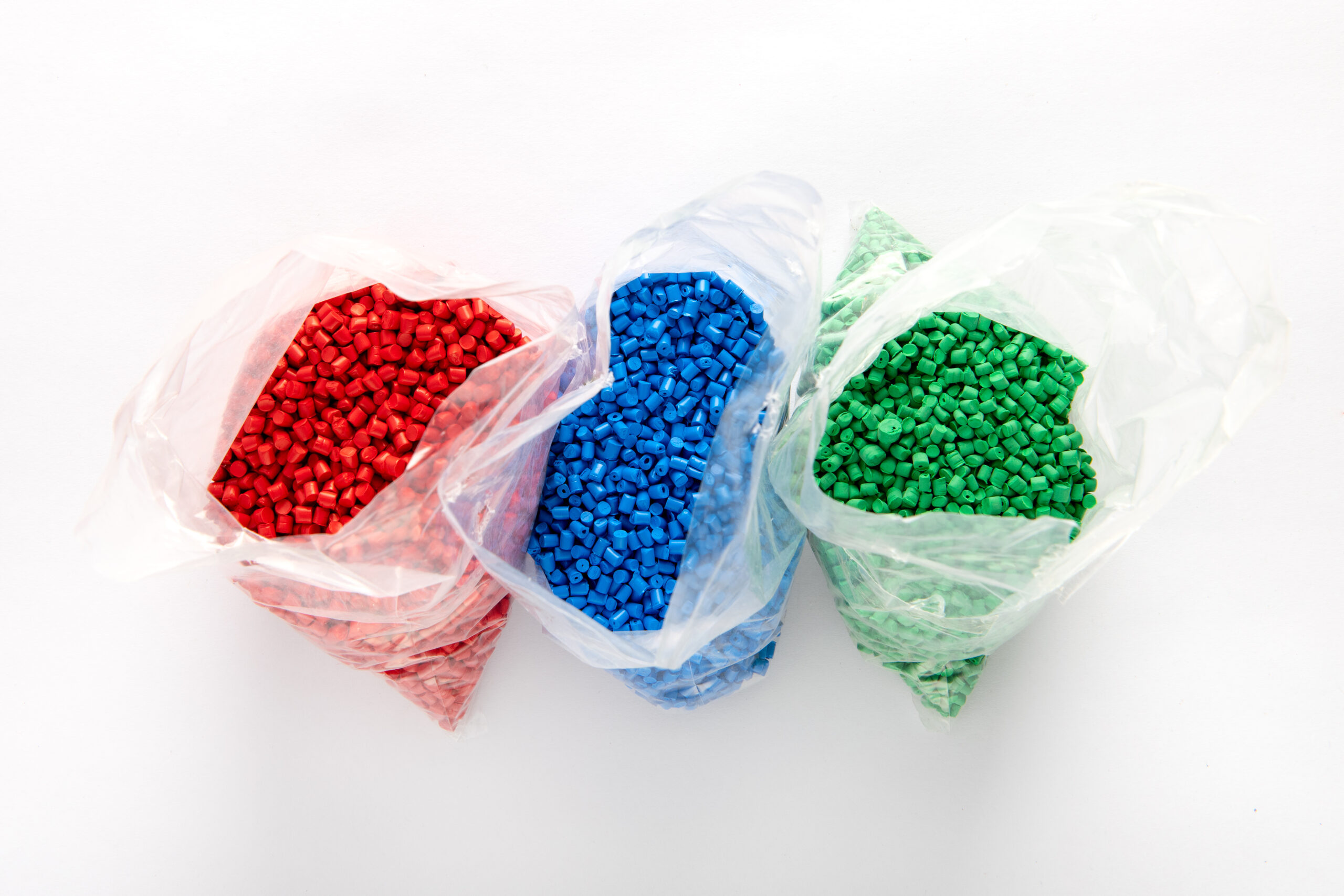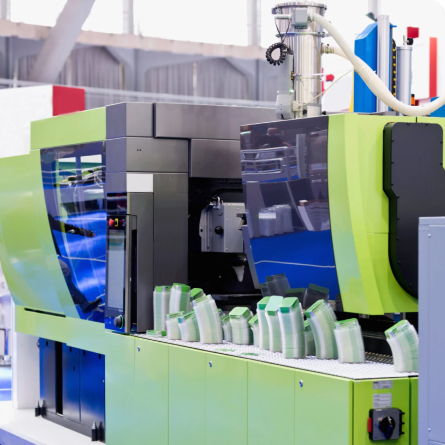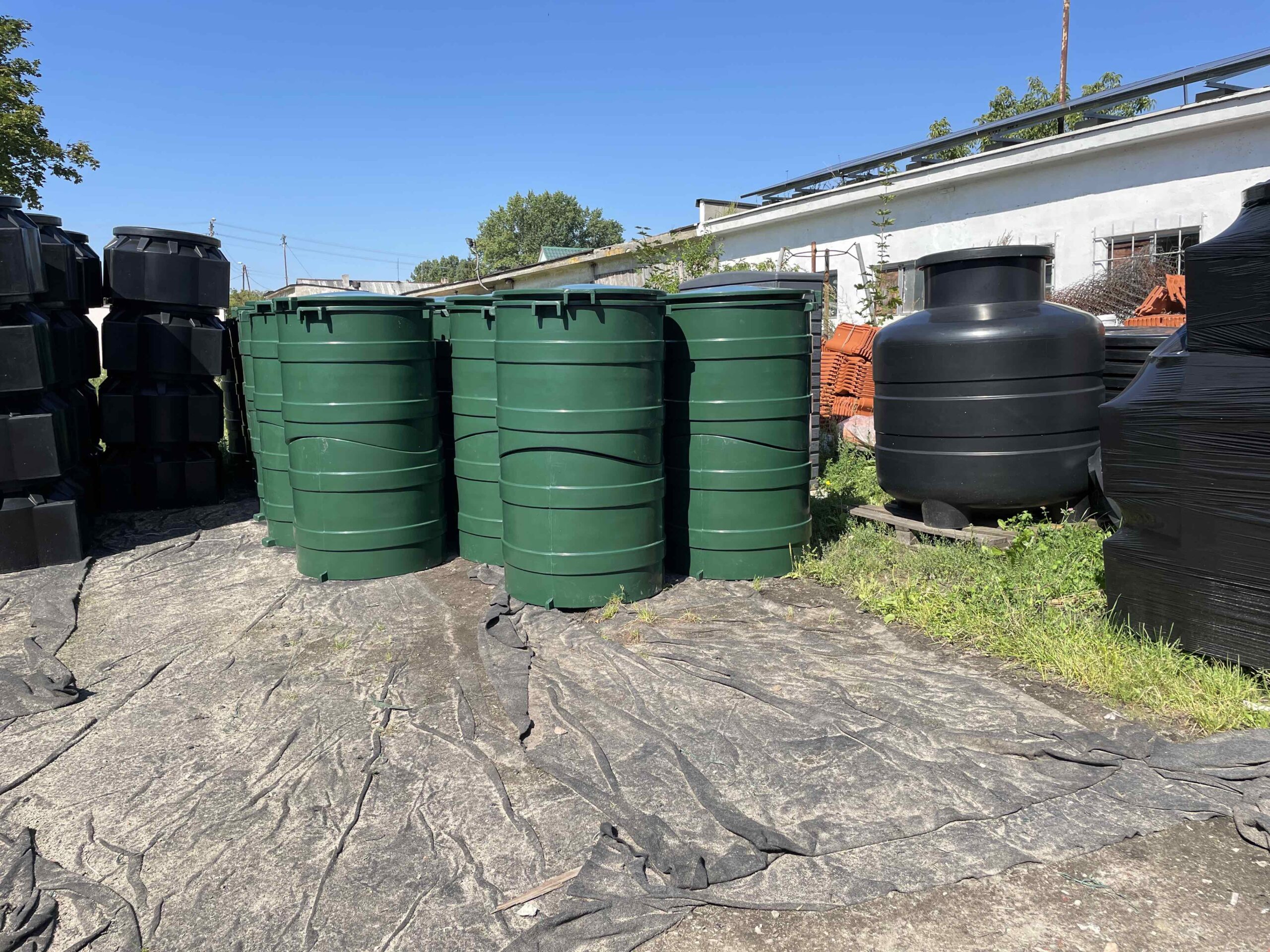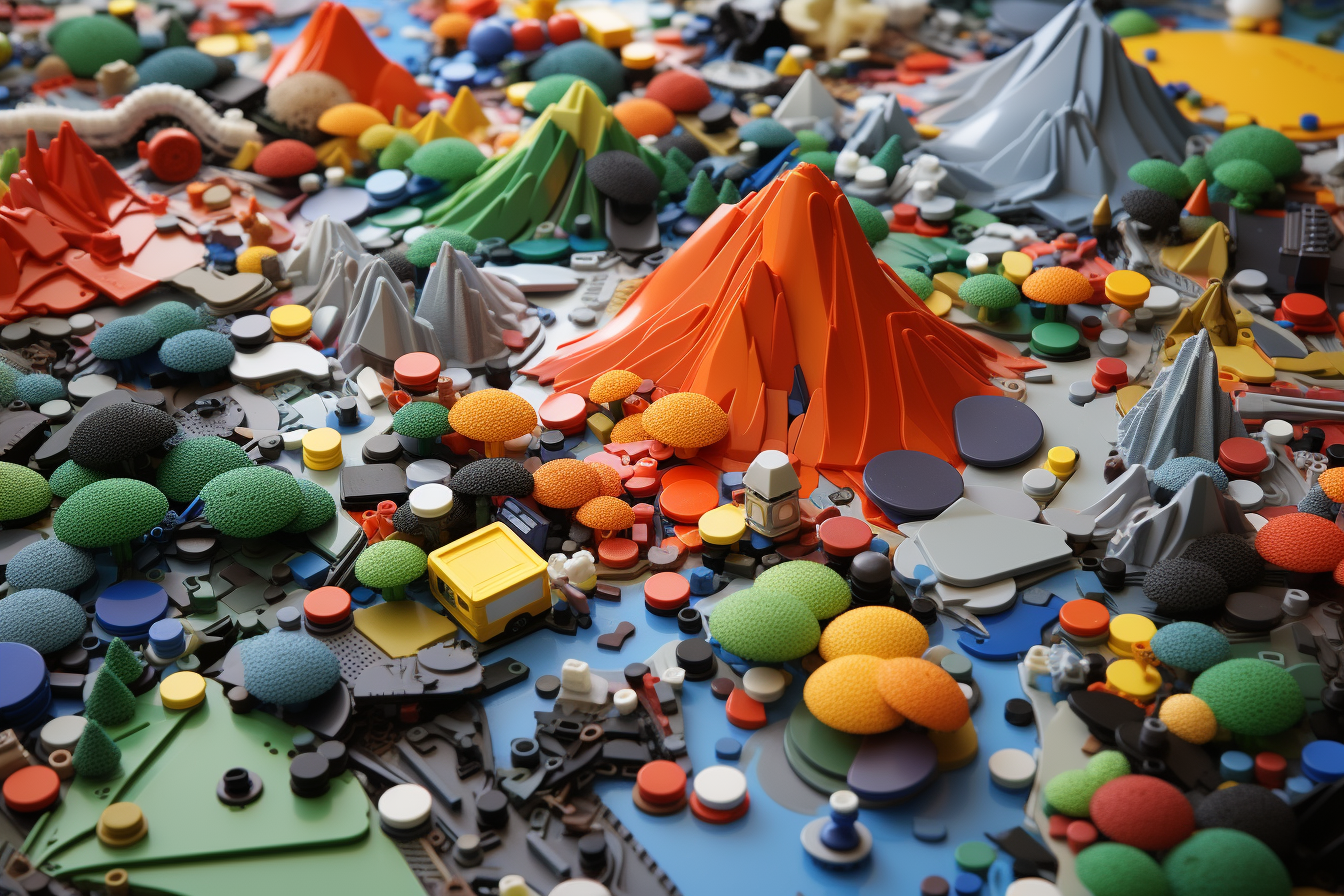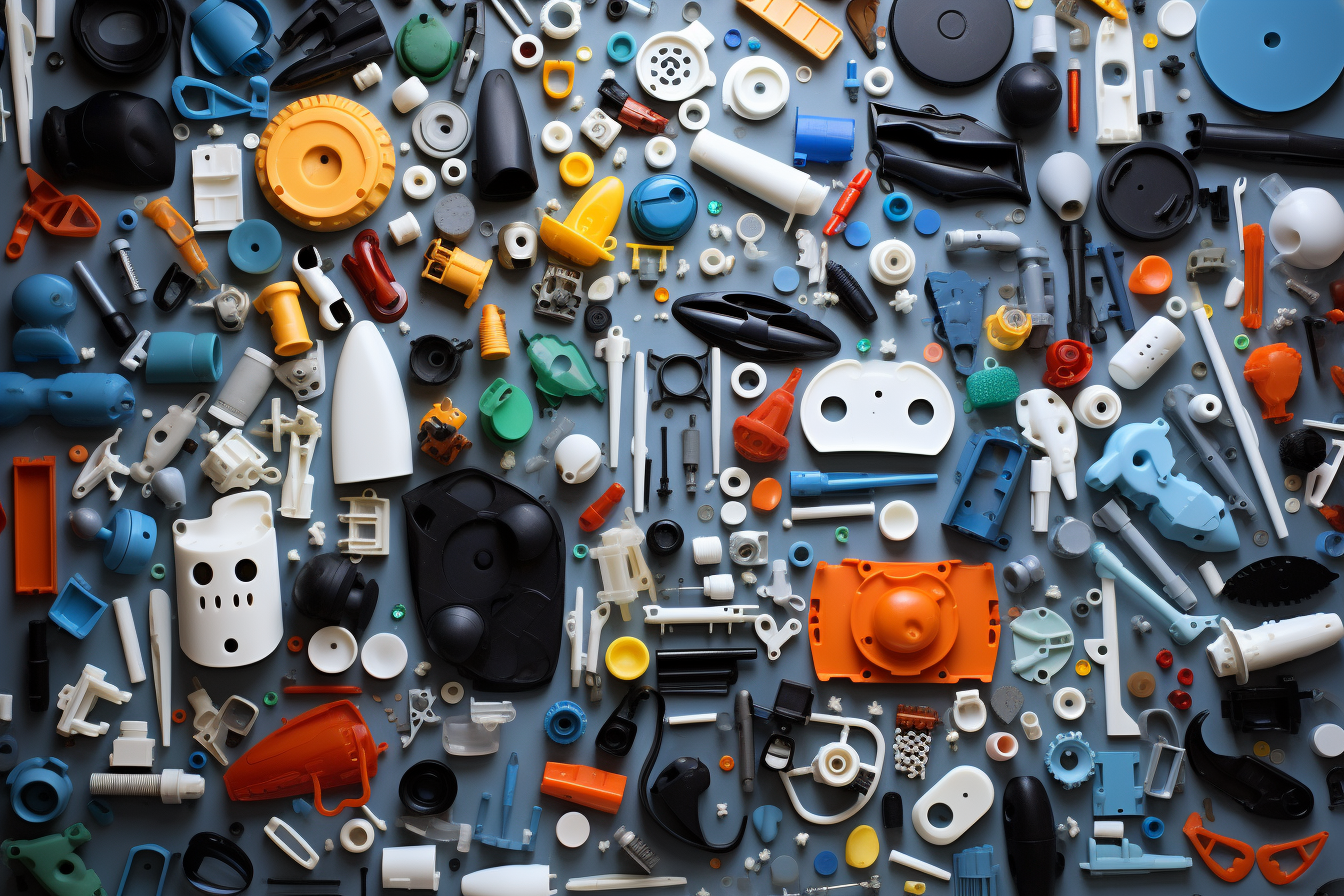Update – March 2024
Overmolding (also overmolding, or plastic overmolding) is a technological process very often used in industry. It makes it possible to create products that are made of several materials, making the process unique.
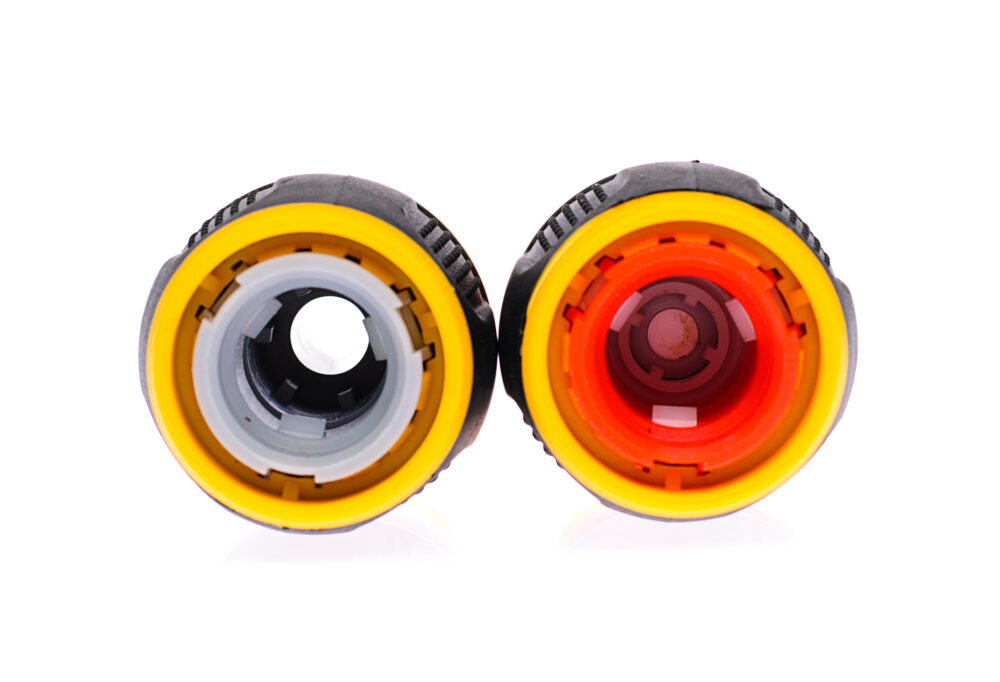
By reading the article, you will learn:
- What overmolding is and how it works?
- Which materials can be combined in the overmolding process?
- How to design components for overmolding?
- What are the advantages and disadvantages of the process?
What materials are dedicated to the overmolding process?
Many types of plastics can be used in overmoulding technology.
The most commonly used are PP (polypropylene), PE (polyethylene) or ABS (acrylonitrile-butadiene-styrene). The most important aspect is to check and confirm in advance whether the selected materials are compatible enough to be combined.
The most common are 4 basic material combinations:
Plastic – plastic material
This process involves injecting the main structure, the product base, and then injecting the outer part around the created body. The surfaces of both materials are typically similar, often differing only in visual aspects such as color.
Plastic – rubber
The product’s body is made from durable and relatively hard plastic onto which rubber is molded. This solution is most commonly used for products where the parts that are gripped should be ergonomic.
Metal – plastic
The product’s body is made of metal, while plastic elements are molded onto its surface.
Metal – rubber
The product’s body is made of metal, and a rubber part is molded onto its surface. The function of the rubber element is to provide an ergonomic grip. This gives us the opportunity to combine the advantages of using metal components with rubber.
It’s important to remember that joining materials that differ from each other, especially those belonging to different material groups, is a surprisingly complex task. Extensive testing should be conducted beforehand to ensure that these materials are compatible enough to be successfully joined together.
Don't wait!
Tailor the technology to your needs to reduce plastic production costs.
Special cases of overmolding application
Overmolding provides numerous, often unconventional, opportunities. In this section, we present two innovative solutions using overmolding.
- Insert molding → jest to proces jednostopniowy. Polega on na umieszczeniu specjalnej metalowej wkładki w środku formy, a następnie obtryśnięcie jej tworzywem sztucznym. Examples of details that are manufactured using this method include. Electrical plugs.
- Multi-shot molding → is a much more complex process that requires special equipment. This process is highly automated, thanks to robotic systems that enable the transfer of molded parts from one injection molding machine to another in significantly less time.
What are the differences between injection molding and overmolding?
There are many differences between the traditional injection molding process and overmolding. The most important ones include:
The number of materials used. In the case of traditional injection molding, only one material is used, while in the case of overmolding, it is two or more.
Number of forms. In the case of traditional injection molding, only one mold is produced, while in overmolding, 2 molds are used – the first one is for injecting the product’s main body, and the second mold is prepared for the already produced main body and the element that will be located on it.
Product Structure. In the case of traditional injection molding, the surface is uniform, whereas in overmolding, it is diverse – this depends on the type of materials used.

Sample products produced through overmolding.
Overmolding manufacturing is widely used in industry. These may include:
- electrical plugs
- handles, such as tools
- covers for bicycle handlebars
- medical components
- components for the automotive industry, automotive parts
How products should be designed?
There are several design issues to consider when designing plastic overmolding parts.
These include: Material compatibility, part design, body design, wall thickness, and undercuts and overhangs. Poniżej omówiono najważniejsze aspekty:
Material compatibility
One of the most important design aspects in plastic overmolding is material compatibility.
The materials used must be compatible with each other to ensure a strong bond between the layers. Compatibility can be affected by factors such as melting point, processing shrinkage and coefficient of thermal expansion.
Product design
The design of the overmolded part is also crucial to the success of the process.
The component must have features that allow the plastic to flow evenly throughout the mold, without creating air pockets or voids.
The detail should also have sufficient pull angles and radii to allow it to be easily pulled out of the mold.
Wall thickness
The wall thickness of the molded part is another important design consideration.
Parts that are too thin may warp or deform during the molding process, while parts that are too thick may not fill completely, creating air pockets or voids.
The optimal wall thickness depends on the specific materials and the molding process used.
Undercuts and overhangs
Parts with undercuts and overhangs can be a challenge during mold design because the plastic may not be able to flow evenly into these areas.
Special techniques such as side pulls or collapsible cores may be required to create parts with undercuts and overhangs.
Advantages of overmolding
The overmolding process is an innovative technological process that offers several advantages. Here are a few of them:
Improved functionality – this technology enables the creation of multi-component components that can improve product functionality. For example, an injected plastic handle can have a soft, comfortable grip area for ergonomics and better user comfort.
Increased product life – overmolding can improve product life by adding a protective layer to the component.
Improved ergonomics and aesthetics – The ergonomics and aesthetics of the product can be enhanced through the use of materials that provide a soft touch and an attractive finish.
Increased product strength – overmolding can improve product strength by reinforcing weak areas with stronger material.
Increased stiffness – overmolding can improve product stiffness by adding a rigid layer to the component.
Increased flexibility – overmolding can improve product flexibility by adding a soft layer to the component.
Improved chemical resistance – overmolding can improve a product’s chemical resistance by adding a layer of chemical-resistant material.
Improving thermal properties – Overmolding can improve the thermal properties of a product by adding a layer of material that can withstand high or low temperatures.
Disadvantages of overmolding
Overmolding, like any technology, also has its drawbacks. Here are a few of them:
- Specialized tooling – this process requires the use of special tooling such as inserts, which are manufactured based on a specific design. Additional tooling is usually quite expensive.
- Longer lead time – due to the need for additional tooling, lead time is longer than for classic injection molding
- Limited part geometry – the overmolding process may not be suitable for some parts, especially those with complex shapes or geometries that require precise positioning of the overmolded material. In such cases, other manufacturing processes, such as machining or assembly, may be more appropriate.
- Material compatibility – some materials may not be suitable for the plastic overmolding process, especially those with different coefficients of thermal expansion or that are not compatible with the overmolding material. This can generate a number of potential defects, such as warping or delamination.
- Production volume – due to the nature of the technology, the overmoulding process is dedicated to serial and high volume production.
Summary
Overmolding is a unique technology that allows for the production of parts with two materials. This enables us to better tailor the properties of the final product without the need for additional assembly (the product is created within the manufacturing process).
Considering overmolding for your product implementation? Consult your project with our experts, and they will be sure to answer whether the overmolding process is feasible for making parts from the materials you are considering.


